- History of the Manaslu Expedition
- Highlights of the Manaslu Expedition
- Routes for the Manaslu Expedition
- Mountain views are seen during the Manaslu Expedition
- How Difficult Is the Manaslu Expedition?
- How to prepare for the Manaslu Expedition
- Permits for the Manaslu Expedition
- Best Season For Manaslu Expedition
- Accommodation and Meals During The Manaslu Expedition
- Travel Insurance for the Manaslu Expedition
- Checklist for the Manaslu Expedition
- Tips for the Manaslu Expedition
- FAQs (Frequently Asked Questions) for Manaslu Expedition in Nepal
The Manaslu Expedition is a remarkable mountaineering endeavor that involves scaling the majestic peak of Mount Manaslu, standing tall at an impressive elevation of 8,163 meters (26,781 feet). Located in the Gorkha District of Nepal, Manaslu is the eighth-highest mountain in the world and offers a thrilling experience to seasoned climbers seeking to conquer its formidable slopes.
A typical Manaslu Expedition can last anywhere between 40-50 days, depending upon the weather and individual acclimatization process. The expedition typically begins with a scenic trek, starting from the picturesque town of Arughat or Soti Khola. As climbers venture deeper into the Manaslu Conservation Area, they traverse verdant valleys, dense forests, and charming villages of the region. As climbers make their way higher, they experience the true test of endurance and determination. The extreme altitude brings frigid temperatures, fierce winds, and reduced oxygen levels. Weather conditions can be unpredictable and rapidly changing, adding an additional element of challenge to the expedition.
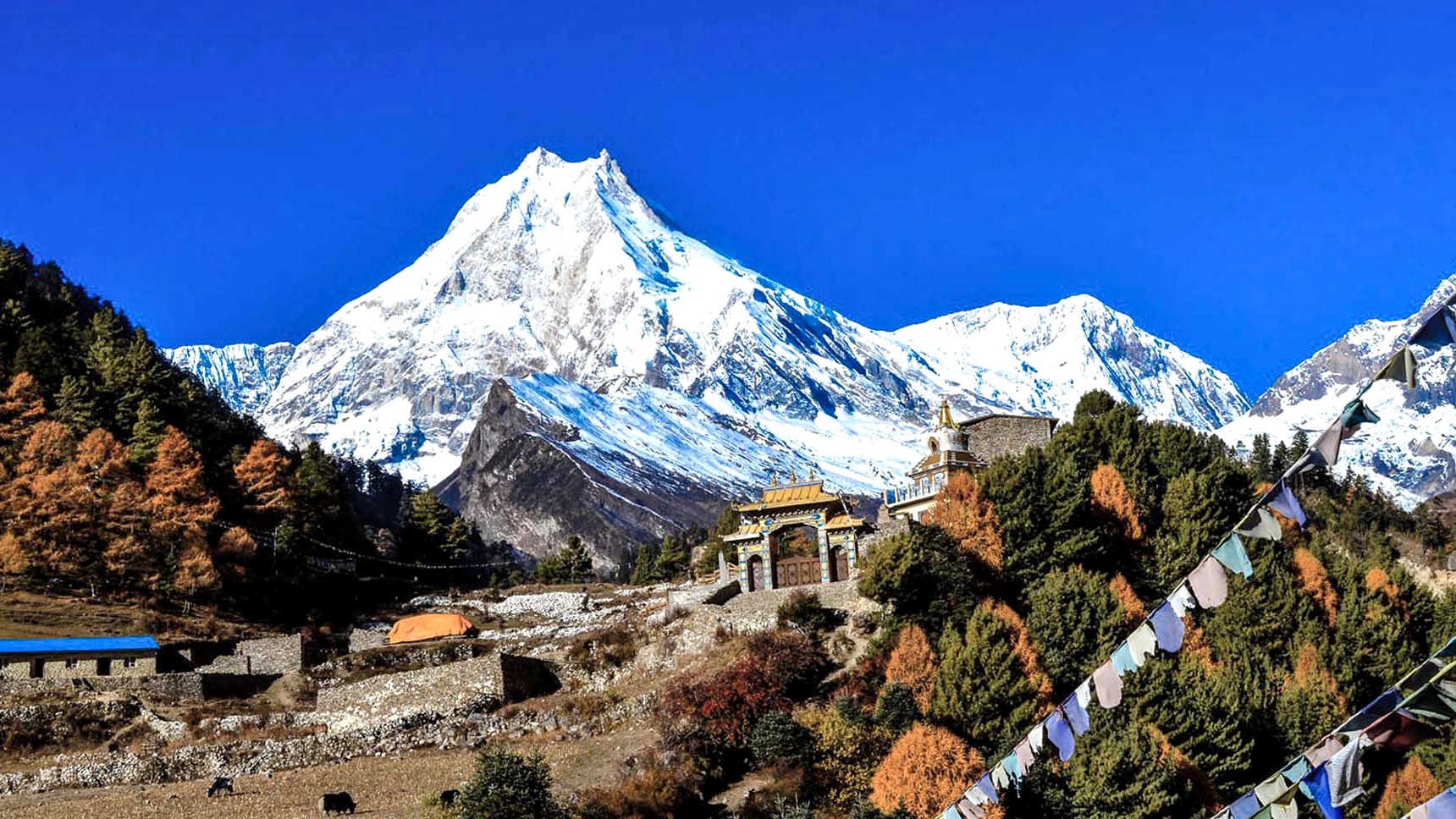
Despite its challenges, the expedition offers stunning panoramic views and the reward of summiting one of the world's highest peaks. The Manaslu region is also rich in cultural heritage, you can witness the Tibetan-influenced local communities showcasing a cultural immersion experience for the climbers. You can interact with them, visit the local villages or monasteries, and learn more about local customs among the inhabitants of the Manaslu region.
The Mount Manaslu Expedition is an extraordinary adventure that combines physical endurance, mental strength, and a deep appreciation for the natural wonders of the Himalayas. It is a journey that tests limits, pushes boundaries, and rewards climbers with an unforgettable experience in one of the world's most captivating mountain ranges.
History of the Manaslu Expedition
The history of the Manaslu Expedition dates back to the mid-20th century when mountaineers began setting their sights on the uncharted peaks of the Himalayas. The first documented attempt to conquer Manaslu occurred in 1952, led by a Japanese expedition. However, they were unable to reach the summit due to difficult weather conditions and treacherous terrain.

It wasn't until 1956 that another Japanese team, led by Toshio Imanishi, successfully reached the summit of Manaslu for the first time. This marked a significant milestone in the history of mountaineering, as Manaslu became the first 8,000-meter peak to be climbed by an expedition from any nation. The achievement brought international attention to the mountain and sparked interest among mountaineers from around the world.
In the following years, more expeditions were organized to conquer Manaslu, with climbers from various countries attempting to reach the summit.
Highlights of the Manaslu Expedition
- The majestic peak of Mount Manaslu, the eighth-highest mountain in the world.
- Unspoiled natural beauty with diverse landscapes and breathtaking views.
- Cultural immersion with encounters with local communities and ancient monasteries.
- Off-the-beaten-path experience away from the crowds.
- Technical challenges include steep ice walls and narrow ridges.
- Panoramic views of surrounding Himalayan peaks.
- Opportunity for cultural exchange and learning.
- Personal achievement and fulfillment upon reaching the summit.
- Contribution to nature preservation and sustainable tourism.
Routes for the Manaslu Expedition
During the Manaslu Expedition, climbers follow specific routes and establish camping sites at various altitudes to facilitate the ascent. Here is a detailed overview of the route and camping during the expedition
Normal Route via Northeast Face
Base Camp: The journey typically begins at the village of Soti Khola, and climbers trek through picturesque villages and landscapes. The Base Camp is usually established at an altitude of around 4,800 meters (15,750 feet) near the village of Samagaon.
Camps: After acclimatization at the Base Camp, climbers establish higher-altitude camps along the route. Camp 1 is set up around 5,700 meters (18,700 feet), Camp 2 at approximately 6,400 meters (21,000 feet), and Camp 3 at about 7,400 meters (24,300 feet). These camps serve as resting points and provide climbers with the necessary supplies and equipment.
Summit Push: From Camp 3, climbers make their final summit push. They navigate through steep slopes, snowfields, and potentially challenging weather conditions to reach the summit at 8,163 meters (26,781 feet). The descent follows the same route, and climbers return to the lower camps before heading back to Base Camp.
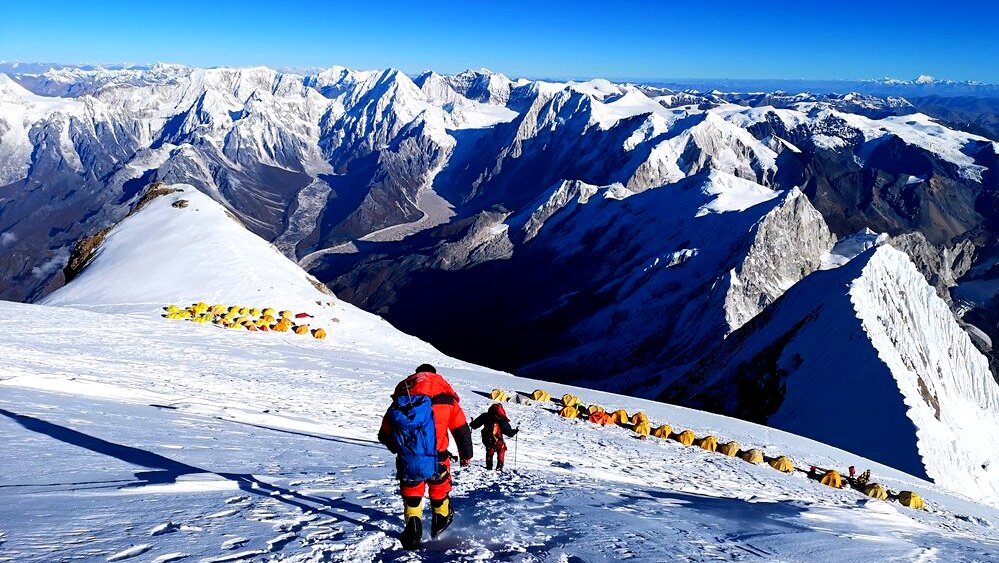
South Face Route
Base Camp: The journey commences from the village of Samagaon, and the Base Camp is established at an altitude of approximately 4,800 meters (15,750 feet).
Camps: Climbers set up Camp 1 at around 5,700 meters (18,700 feet), Camp 2 at approximately 6,400 meters (21,000 feet), and Camp 3 at about 7,400 meters (24,300 feet). These camps provide necessary rest and acclimatization points along the challenging south-face route.
Summit Push: From Camp 3, climbers face technical sections, including steep slopes and crevasses, as they make their way toward the summit. The final push involves navigating through the summit ridge to reach the top. The descent follows the same route, with climbers returning to the lower camps and eventually to Base Camp.
East Face Route
Base Camp: The expedition begins from the village of Arughat, and the Base Camp is established at an altitude of around 4,800 meters (15,750 feet).
Camps: Climbers establish Camp 1 at approximately 5,700 meters (18,700 feet) and Camp 2 at about 6,300 meters (20,670 feet) along the challenging east-face route. These camps provide crucial rest and acclimatization opportunities.
Summit Push: Climbers face challenging terrain, including steep sections and complex ice formations, as they progress toward the summit. The final summit push involves negotiating technical sections to reach the top. The descent follows the same route, with climbers returning to the lower camps and eventually to Base Camp.
Throughout the expedition, climbers rely on well-equipped camps for shelter, rest, and acclimatization. The camps are equipped with tents, sleeping bags, cooking facilities, and necessary supplies. Sherpa guides and support teams often assist in setting up and maintaining the camps, ensuring climbers have a safe and comfortable environment to rest and recover during the ascent.
Mountain views are seen during the Manaslu Expedition
During the Manaslu Expedition, climbers are treated to breathtaking mountain views and panoramic vistas of the surrounding Himalayan range. Here are some of the notable mountain views that can be experienced during the expedition such as:
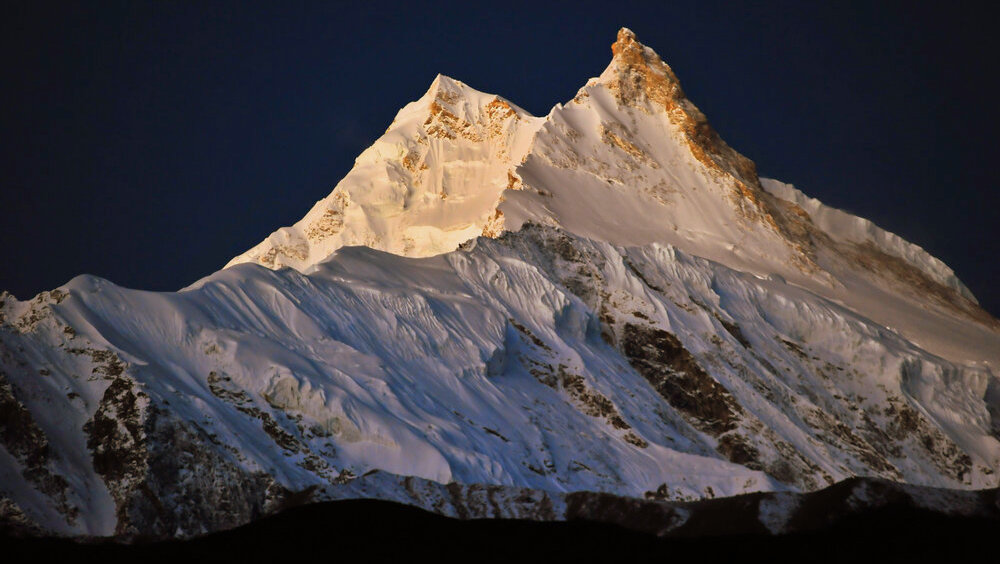
Mount Manaslu: The expedition offers stunning views of the majestic peak of Mount Manaslu itself. As climbers ascend, they witness the awe-inspiring sight of the mountain's towering presence, its snow-covered slopes, and the distinct shape of its summit.
Annapurna Range: From various vantage points along the Manaslu route, climbers can enjoy mesmerizing views of the Annapurna Range. This includes peaks such as Annapurna I, Annapurna II, Annapurna III, Annapurna IV, and other prominent peaks that form part of this iconic mountain range.
Ganesh Himal Range: The Manaslu region also provides glimpses of the Ganesh Himal Range. These mountains, named after the Hindu deity Ganesh, present a picturesque backdrop with their snow-clad peaks and rugged beauty.
Himalchuli: Himalchuli, a prominent mountain in the region, is also visible during the expedition. Its pyramid-shaped peak and impressive size add to the visual spectacle encountered by climbers.
Naike Peak: Naike Peak, located near the Manaslu region, offers panoramic views from its summit. Climbers who opt for side excursions or extended treks may be rewarded with a stunning perspective of the surrounding mountainous landscape.
Lamjung Himal: Lamjung Himal, another notable peak, can be seen in the distance during the Manaslu Expedition. With its distinct ridge and snow-covered slopes, it adds to the grandeur of the mountain vistas.
Himlung Himal: Himlung Himal, situated to the northwest of Manaslu, is also visible during the expedition. This striking mountain showcases its majestic presence and adds to the visual splendor of the surroundings.
These mountain views provide climbers with a sense of awe and appreciation for the natural beauty of the Himalayas. The ever-changing light, weather conditions, and perspectives encountered during the ascent create a dynamic and unforgettable experience, offering a true feast for the eyes and soul.
How Difficult Is the Manaslu Expedition?
The Manaslu Expedition is renowned as a highly challenging endeavor, demanding a great deal from mountaineers who dare to take on its formidable slopes. Two key factors contribute to its difficulty. Firstly, the extreme altitude of Mount Manaslu at 8,163 meters (26,781 feet) presents significant physiological challenges. Climbers must contend with reduced oxygen levels, increased risk of altitude sickness, and the strain that high altitude places on the body. Adequate acclimatization and careful monitoring of symptoms are crucial to ensure the safety and well-being of climbers.
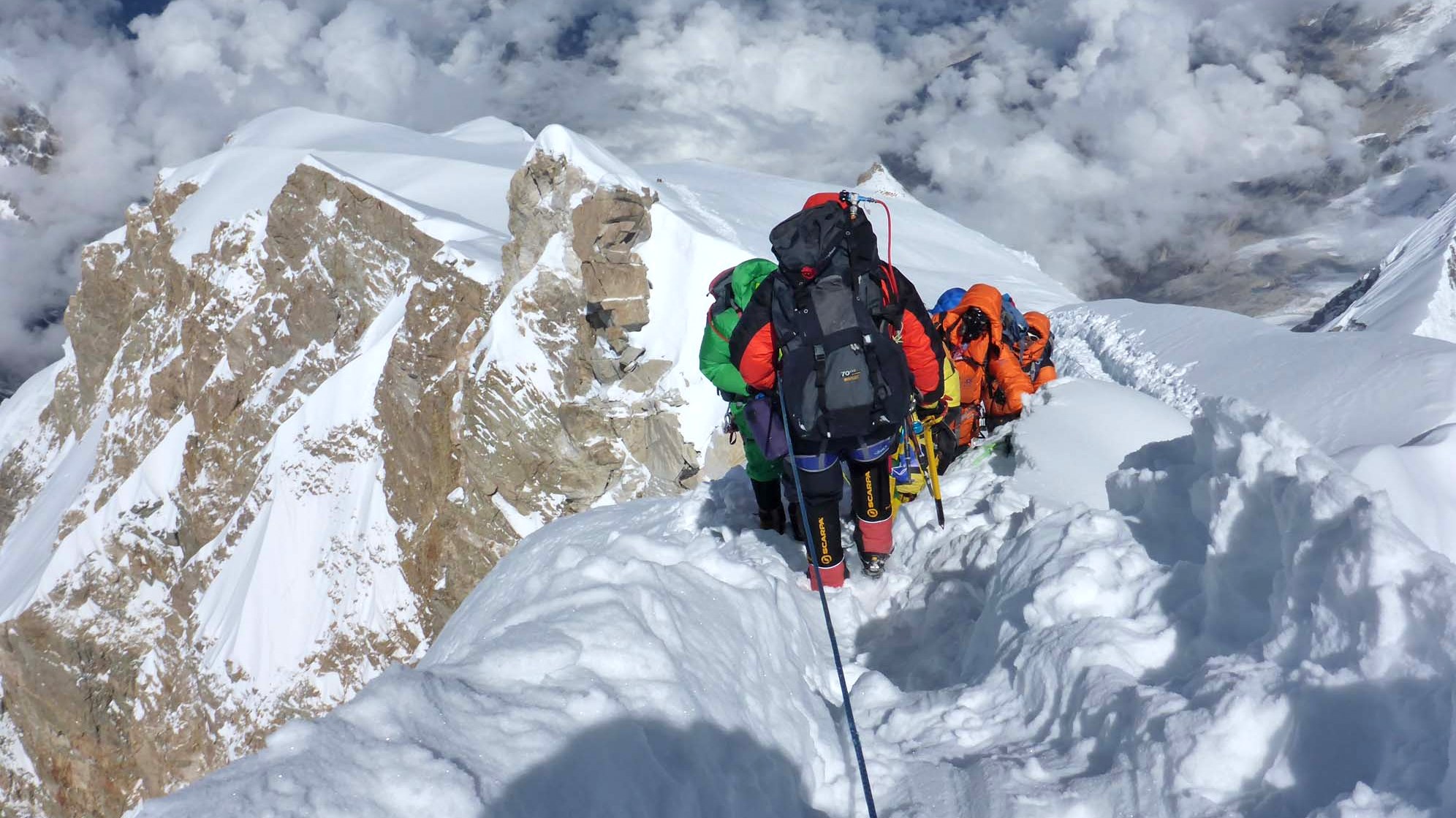
Secondly, technical climbing requirements add to the difficulty level of the expedition. The routes up Manaslu involve steep slopes, icy terrain, crevasses, and intricate ice formations. Mountaineers need to possess advanced climbing skills, including the use of crampons, ice axes, and ropework techniques, to navigate these challenging sections safely. The ability to assess the conditions, make sound decisions, and execute precise climbing maneuvers becomes essential to surmount the technical difficulties encountered along the way.
Despite the immense difficulty, the Manaslu Expedition remains a sought-after challenge for experienced climbers seeking to test their limits. Adequate preparation, physical fitness, technical proficiency, and a resilient mindset are paramount for those embarking on this demanding journey.
How to prepare for the Manaslu Expedition
To prepare for the Manaslu Expedition, it is important to focus on physical fitness and acclimatization. Engage in regular cardiovascular exercises such as running, cycling, or hiking to build endurance and stamina. Incorporate strength training exercises to strengthen your core, upper body, and leg muscles, as they will be essential for the demanding terrain. Gradually increase the intensity and duration of your workouts to simulate the challenges you will face on the expedition. Additionally, it is crucial to gain high-altitude experience by undertaking other treks or peaks to acclimate your body to the lower oxygen levels. Familiarize yourself with mountaineering techniques, including the use of crampons, ropes, and ice axes. Ensure you have the necessary permits, gear, and a well-planned itinerary in place before embarking on the expedition. Consulting with experienced mountaineers or hiring a reputable guide can provide valuable insights and assistance in preparing for the Manaslu Expedition.
Permits for the Manaslu Expedition
Climbers must receive different permits from the Nepalese government in order to embark on the Manaslu Expedition. These permits are necessary to ensure proper management of the expedition and to protect the natural and cultural heritage of the region. Here are the permits typically required for the Manaslu Expedition:
Manaslu Restricted Area Permit: This is the main permit needed for the expedition. It is issued by the Department of Immigration in Kathmandu or through authorized trekking agencies. The permit grants access to the restricted area surrounding Mount Manaslu and is valid for a specific duration.
Manaslu Conservation Area Project (MCAP) Permit: As the expedition passes through the Manaslu Conservation Area, climbers are required to obtain the MCAP permit. This permit is issued by the Manaslu Conservation Area Project and contributes to the conservation and sustainable management of the region's natural resources.
Annapurna Conservation Area Project (ACAP) Permit: Depending on the chosen route, climbers may also need the ACAP permit. The Annapurna Conservation Area is a protected area, and this permit helps fund conservation efforts and support local communities.
Trekking Information Management System (TIMS) Card: The TIMS card is required for both the Manaslu region and the Annapurna region. It is intended to ensure the safety and security of trekkers and climbers and to collect data for tourism-related statistics.
Best Season For Manaslu Expedition
The Manaslu Expedition can be attempted during all four seasons, although the spring and autumn seasons are generally considered the best times for the climb. Here's a breakdown of the different seasons and their characteristics:
Spring (March to May)
Spring is considered one of the prime seasons for the Manaslu Expedition. The weather during this time tends to be stable, with clear skies and moderate temperatures. The snow conditions are usually more manageable, making climbing and navigating the slopes easier. The colorful blossoms of rhododendron forests and alpine meadows provide a scenic backdrop to the expedition. However, it is worth noting that the popularity of the spring season may result in more climbers on the route.
Base Camp: Daytime temperatures: 5°C to 15°C (41°F to 59°F) and the Nighttime temperatures: -5°C to 5°C (23°F to 41°F)
High Camps: Daytime temperatures: -10°C to -20°C (14°F to -4°F) and the Nighttime temperatures: -20°C to -30°C (-4°F to -22°F) or even lower
Summer (June to August)
The monsoon season in Nepal, which spans from June to August, brings heavy rainfall, high humidity, and unstable weather conditions to the Manaslu region. The wet trails, slippery slopes, and increased risk of landslides make it impractical and unsafe to attempt the Manaslu Expedition during this time. The monsoon season is generally not recommended for climbing activities in the Himalayas.
Base Camp: Daytime temperatures: 10°C to 20°C (50°F to 68°F) and the Nighttime temperatures: 0°C to 10°C (32°F to 50°F)
High Camps: Daytime temperatures: -5°C to -15°C (23°F to 5°F) and the Nighttime temperatures: -15°C to -25°C (5°F to -13°F) or even lower
Autumn (September to November)
Autumn is another favorable season for the Manaslu Expedition. The weather is generally stable and dry, offering clear visibility and comfortable temperatures. The post-monsoon period ensures that the trails and climbing routes are accessible. Autumn also provides breathtaking views of the surrounding mountains, including the snow-capped peaks. Compared to spring, the autumn season tends to have fewer climbers on the route, providing a more tranquil experience.
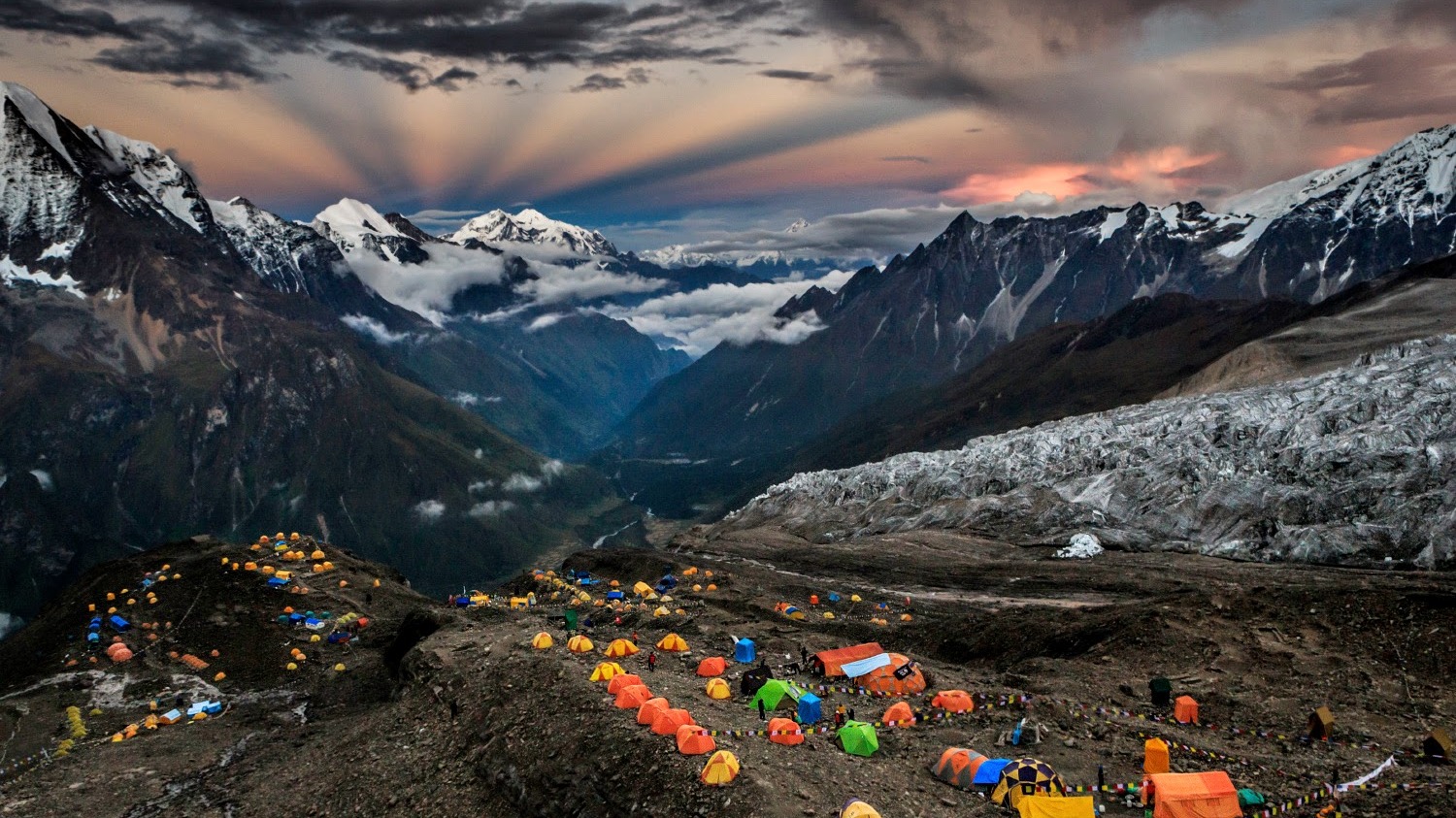
Base Camp: Daytime temperatures: 5°C to 12°C (41°F to 54°F) and the Nighttime temperatures: -5°C to 0°C (23°F to 32°F)
High Camps: Daytime temperatures: -10°C to -20°C (14°F to -4°F) and Nighttime temperatures: -20°C to -30°C (-4°F to -22°F) or even lower
Winter (December to February)
Winter brings cold temperatures and heavy snowfall to the Manaslu region. The extreme weather conditions and deep snow make climbing more challenging, and the risks associated with avalanches and frostbite increase significantly. Due to the harsh conditions, fewer climbers attempt the Manaslu Expedition during this season. However, for experienced mountaineers seeking a greater challenge and solitude, it is possible to undertake the expedition with proper preparation and specialized equipment.
Base Camp: Daytime temperatures: -5°C to 5°C (23°F to 41°F) and the Nighttime temperatures: -10°C to -5°C (14°F to 23°F)
High Camps: Daytime temperatures: -15°C to -25°C (5°F to -13°F) and the Nighttime temperatures: -25°C to -40°C (-13°F to -40°F) or even lower
It is important to note that weather patterns can vary from year to year, and climbers should always stay updated on current weather forecasts and consult with experienced guides or weather experts when planning their ascent. Their expertise and local knowledge will help determine the most suitable time to undertake the Manaslu Expedition based on prevailing conditions.
Accommodation and Meals During The Manaslu Expedition
During the Manaslu Expedition, climbers stay in a combination of camping accommodations and tea houses along the trekking route. Here's more information about accommodation and meals during the expedition:
Teahouses
Along the trekking route to Manaslu, there are tea houses available in several villages. These teahouses are basic lodges that provide rooms for trekkers. The rooms are typically shared, with basic amenities such as beds, blankets, and sometimes solar-powered or limited electricity for charging devices. Teahouses also have communal dining areas where trekkers can gather for meals.
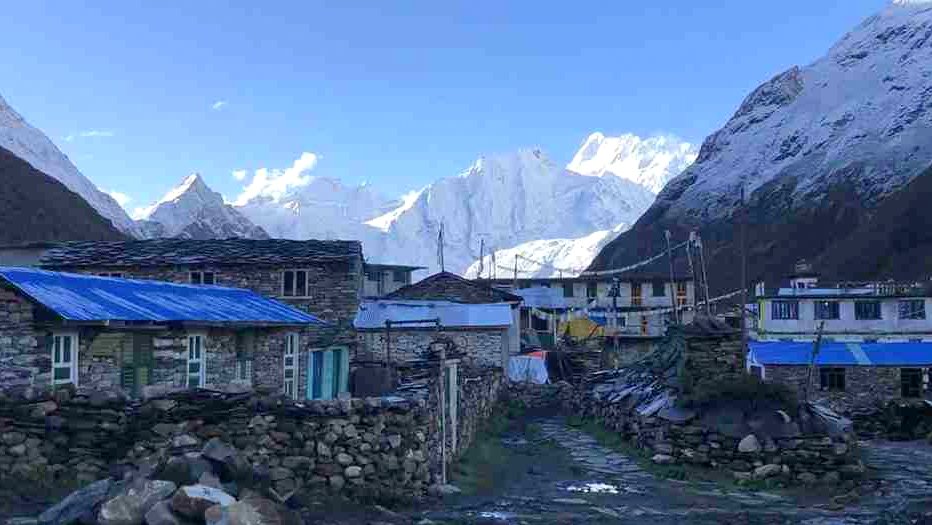
Camping
As climbers ascend higher and venture into more remote sections of the expedition, camping becomes the preferred accommodation option. Climbing teams set up camps at designated locations, such as base camps and higher altitude camps, where they have their own tents and camping equipment. These camps serve as temporary shelters during the expedition.
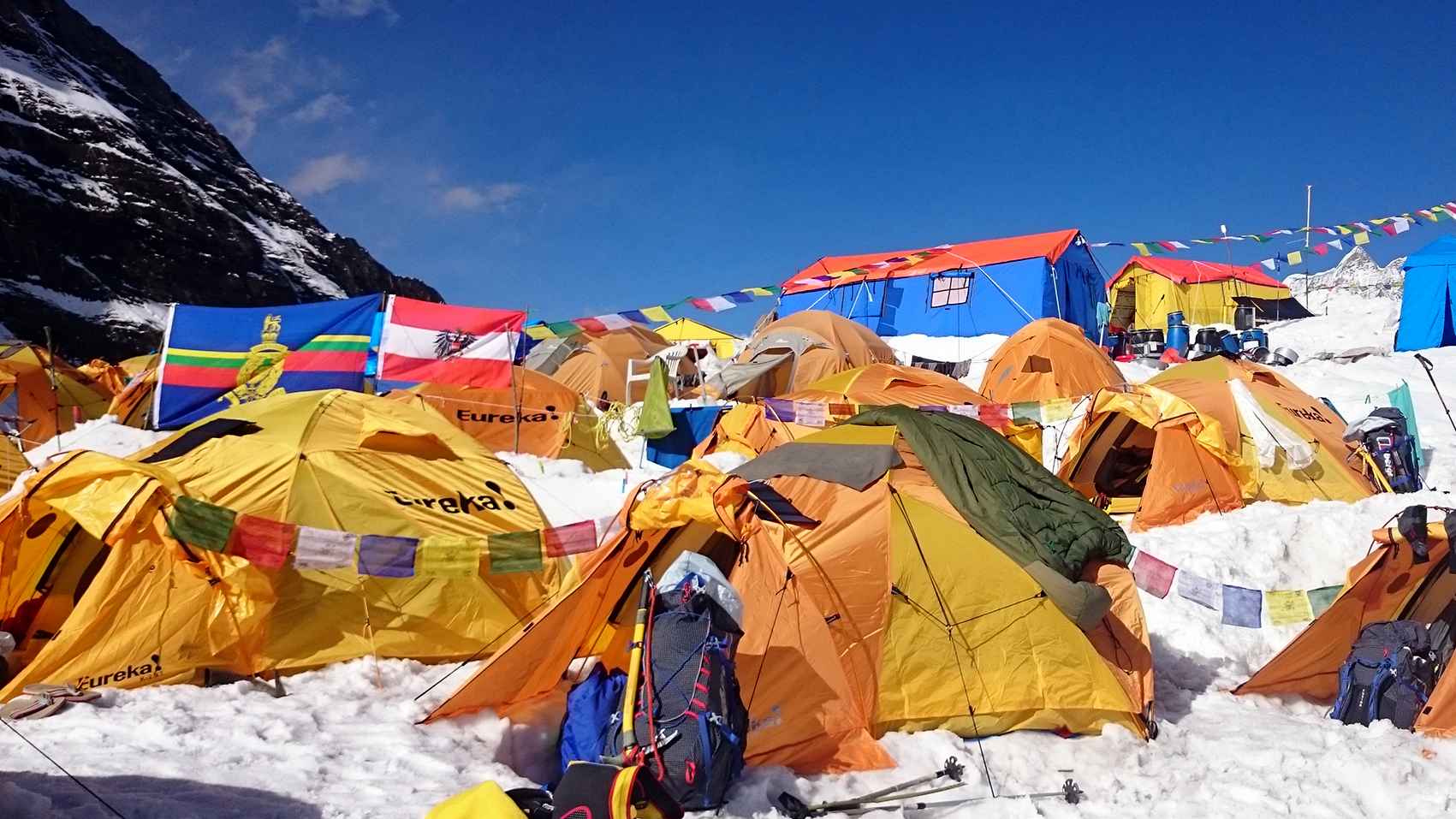
Meals
Meals during the Manaslu Expedition are primarily provided at teahouses or prepared at the campsites for camping teams. Here's what you can expect in terms of meals:
- Meals in Teahouses: Teahouses offer a menu with a variety of options, including Nepali, Tibetan, and international dishes. The menu typically includes items such as dal bhat (rice with lentil soup and vegetables), noodles, momo (dumplings), soups, curries, and snacks. Teahouses usually serve three meals a day, including breakfast, lunch, and dinner.
- Meals in Camping: For climbing teams staying at campsites, meals are prepared by the expedition's support staff, which may include cooks and kitchen helpers. Meals at the campsites are usually simple but nutritious, consisting of items like pasta, rice, noodles, soups, vegetables, meat, and energy-rich snacks. The specific menu and meal plans are determined by the expedition logistics and the preferences of the climbing team.
It is important to note that the availability and variety of food options may be limited in remote areas or higher altitudes. It's advisable to inform your expedition team about any dietary restrictions or preferences in advance, so they can make necessary arrangements or advise on appropriate food choices.
Travel Insurance for the Manaslu Expedition
Obtaining comprehensive travel insurance is highly recommended for the Manaslu Expedition or any other similar mountaineering expedition. Here are some important points to consider regarding travel insurance:
- Choose a travel insurance policy that specifically covers mountaineering activities and high-altitude trekking.
- Ensure the policy provides coverage for emergency medical expenses, including evacuation and rescue costs.
- Look for coverage that includes trip cancellation or interruption, as unforeseen circumstances could disrupt your expedition plans.
- Check if the policy offers coverage for loss, theft, or damage to personal belongings and expensive mountaineering equipment.
- Confirm that the travel insurance provides 24/7 emergency assistance services for any unforeseen events or emergencies.
- Carefully review the policy exclusions and limitations, including pre-existing medical conditions and engaging in unauthorized mountaineering activities.
- Select a reputable insurance provider that specializes in adventure travel or mountaineering expeditions.
- Consult with an insurance agent or company to discuss your specific needs and ensure you have adequate coverage for the Manaslu Expedition.
It is essential to read the policy details, understand the coverage, and select a reputable insurance provider that specializes in adventure travel or mountaineering expeditions. Consider consulting with an insurance agent or company to discuss your specific needs and ensure you have adequate coverage for the Manaslu Expedition.
Checklist for the Manaslu Expedition
Preparing for the Manaslu Expedition requires careful planning and ensuring you have all the necessary equipment and supplies. Here's a checklist to help you organize your gear and essentials:
Climbing Gear
- Mountaineering boots
- Crampons
- Ice axes
- Climbing harness
- Helmet
- Ropes and carabiners
- Ascenders and descenders
- Climbing helmet
- Ice screws (if required)
- Climbing gloves
- Climbing goggles or sunglasses
- Climbing backpack
Clothing
- Base layers (thermal tops and bottoms)
- Insulated jacket or down jacket
- Waterproof and windproof jacket
- Waterproof and windproof pants
- Fleece or softshell jacket
- Trekking pants
- Insulated pants (for high altitudes)
- Thermal socks
- Mountaineering socks
- Warm hat
- Balaclava or neck gaiter
- Gloves (inner and outer layers)
- Gaiters
- Hiking boots
- Lightweight camp shoes or sandals
Equipment and Accessories
- Sleeping bag (suitable for cold temperatures)
- Sleeping pad or mattress
- Backpack (for trekking and climbing)
- Headlamp and spare batteries
- Trekking poles
- Water bottles or hydration system
- High-altitude tent (if camping)
- Cooking equipment (if camping)
- Portable stove and fuel
- Utensils and cookware
- Water purification tablets or filter
- Personal first aid kit
- Sunscreen and lip balm
- Sunglasses (with UV protection)
- Map and compass
- GPS device (optional)
- Multi-tool or Swiss Army knife
- Duct tape and repair kit
- Camera and spare batteries
- Portable charger/power bank
Miscellaneous
- Passport (with necessary visas)
- Travel insurance documents
- Cash (local currency and emergency funds)
- Personal toiletries and medications
- Snacks and energy bars
- Trekking permits (Manaslu Restricted Area Permit, Climbing Permit, ACAP, etc.)
- Copies of important documents (passport, permits, insurance)
It is important to note that this checklist provides a general overview, and you may need to make adjustments based on personal preferences, the recommendations of your expedition team, and the specific requirements of your climb. It is crucial to consult with experienced mount climbing guides or with us (Luxury Holiday Nepal) for specific gear recommendations and to tailor the checklist to your individual requirements and the expected conditions during the expedition.
Tips for the Manaslu Expedition
Embarking on the Manaslu Expedition requires careful planning and preparation. Here are some essential tips to help you have a successful and safe expedition:
- Prioritize physical fitness through regular exercise, strength training, and endurance activities.
- Plan for adequate acclimatization with rest days and gradual altitude gains.
- Hire experienced guides and climbers familiar with the Manaslu region.
- Invest in high-quality gear and equipment suitable for high-altitude climbing.
- Stay updated on weather forecasts and be prepared for sudden changes.
- Stay hydrated and maintain a balanced diet for optimal performance.
- Follow safety protocols and guidelines provided by your expedition team.
- Practice Leave No Trace principles to minimize your impact on the environment.
- Prepare yourself mentally for the challenges and setbacks that may arise during the expedition.
- Respect the local culture and customs of the Manaslu region.
FAQs (Frequently Asked Questions) for Manaslu Expedition in Nepal
Q: What is the Manaslu Expedition in Nepal?
A: The Manaslu Expedition is a mountaineering adventure in Nepal that involves climbing Mount Manaslu, the eighth-highest mountain in the world. Located in the Mansiri Himal range of the Nepalese Himalayas, it stands at an elevation of 8,163 meters (26,781 feet).
Q: What is the best time to undertake the Manaslu Expedition?
A: The best time to attempt the Manaslu Expedition is during the spring (April to May) and autumn (September to November) seasons. These months typically have more stable weather conditions and offer the best chances of success.
Q: How long does the Manaslu Expedition usually take?
A: The duration of the Manaslu Expedition can vary depending on several factors, including the climber's experience, acclimatization schedule, and weather conditions. On average, it takes around 4-6 weeks to complete the expedition, including trekking to the base camp, acclimatization periods, and summit attempts.
Q: Do I need previous mountaineering experience to join the Manaslu Expedition?
A: Yes, prior mountaineering experience is essential to undertake the Manaslu Expedition. It is considered a technically challenging climb, and climbers should have experience in high-altitude mountaineering, preferably on peaks above 6,000 meters (19,685 feet). Adequate physical fitness and knowledge of mountaineering techniques are also crucial.
Q: Are there any permits required for the Manaslu Expedition?
A: Yes, several permits are required for the Manaslu Expedition. These include the Manaslu Restricted Area Permit, Manaslu Conservation Area Permit (MCAP), and Annapurna Conservation Area Permit (ACAP). These permits are usually obtained through a registered trekking agency or a licensed mountain guide.
Q: Are there any restrictions on the number of climbers allowed on the Manaslu Expedition?
A: Yes, there is a restriction on the number of climbers allowed on the Manaslu Expedition. The Nepalese government sets a quota system each season, limiting the number of permits issued. This helps manage the environmental impact and ensure the safety of climbers.
Q: What are the accommodation options during the Manaslu Expedition?
A: Accommodation during the Manaslu Expedition primarily includes camping at various designated campsites along the route. Basic tents and camping equipment are carried by the expedition team. In some cases, teahouses or lodges may be available at lower elevations during the trek to the base camp.
Q: Is helicopter evacuation always possible?
A: Helicopter evacuations are subject to various factors, including weather conditions, helicopter availability, and the severity of the situation. In certain cases, such as adverse weather or technical difficulties, helicopter evacuations may not be feasible. It's important to have contingency plans in place and be prepared for alternative evacuation methods if necessary.
Q: Can helicopters reach higher altitudes beyond the base camp?
A: Helicopters have limitations in terms of altitude and performance at higher elevations due to the thin air and challenging terrain. While helicopters can reach the base camp, their ability to access higher camps or the summit of Mount Manaslu is limited. Alternative evacuation methods may be required for emergencies at higher altitudes.
Q: Is it necessary to hire a local guide or Sherpa for the Manaslu Expedition?
A: While it is not mandatory to hire a local guide or Sherpa for the Manaslu Expedition, it is highly recommended. Local guides and Sherpas have extensive knowledge of the region, experience in high-altitude climbing, and can provide crucial support and guidance throughout the expedition.
Q: What kind of physical fitness is required for the Manaslu Expedition?
A: The Manaslu Expedition demands a high level of physical fitness. Climbers should engage in regular cardiovascular exercises, strength training, and endurance activities to build stamina, muscular strength, and aerobic capacity. Consulting with a medical professional before undertaking the expedition is advisable.
Q1: What are the potential risks and challenges of the Manaslu Expedition?
A: The Manaslu Expedition presents various risks and challenges, including high altitude, extreme weather conditions, steep and technical sections, avalanches, crevasses, and altitude-related illnesses. Adequate acclimatization, proper equipment, experienced guides, and good decision-making are crucial.
Q: Can I combine the Manaslu Expedition with other treks or peaks in the region?
A: Yes, it is possible to combine the Manaslu Expedition with other treks or peaks in the region. Popular options include the Manaslu Circuit Trek, Tsum Valley Trek, and climbing neighboring peaks like Larkya Peak. Combining these adventures allows for a more comprehensive experience of the region.
Similarly other 8000-meter Mountain Expedition Packages
Makalu Expedition (8,463m)
Mt Everest Expedition (8848.86 m)
Dhaulagiri Expedition (8,167 m)
Kanchenjunga Expedition (8,586 m)
Lhotse Expedition (8,516 m)
7000-meter peaks for Climbing and Expedition in Nepal
Gangapurna Expedition (7,455 m)
Pumori Expedition (7,145 m)
Tilicho Peak Expedition (7,134 m)
Annapurna South Expedition (7,219 m)
6000-meter peaks for Climbing and Expedition in Nepal
Mt Ama Dablam Expedition (6,812 m)
Island Peak Expedition (6,160 m)
Mera Peak Climbing (6,476 m)
Chulu West Peak Climbing (6,419 m)
Pisang Peak Climbing (6,091 m)
Singu Chuli Peak Climbing (6,501 m)
If you need any further information, please contact us by email: at [email protected], Phone: at +977- 985 100 5129 (WhatsApp)